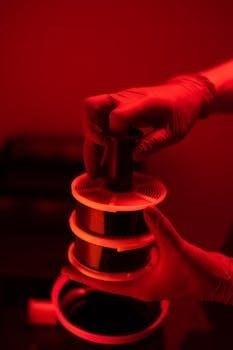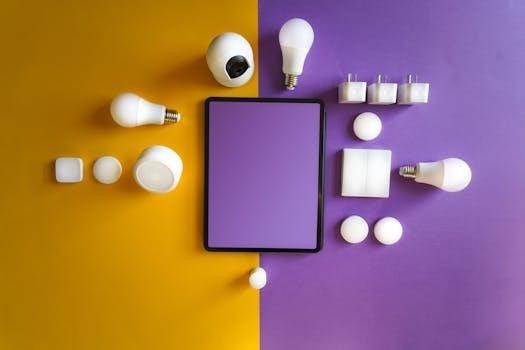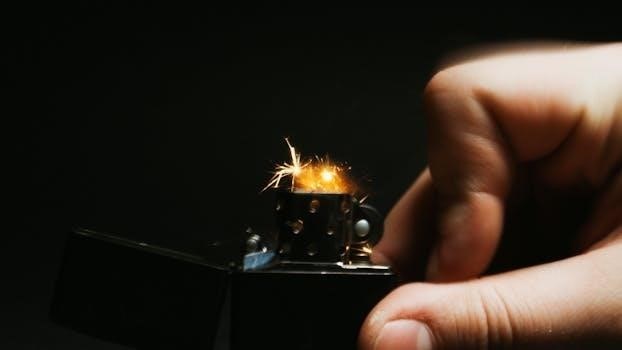Leviton Motion Sensor Light Switch Overview
Leviton’s motion sensor light switches combine advanced technology with modern aesthetics, providing optimal lighting management and offering both auto-on and manual-on options. These energy-saving sensors are designed to control various lighting and motor loads.
Leviton’s Motion Sensor Line
Leviton offers a diverse line of motion sensor light switches, engineered to cater to a wide array of residential, commercial, and industrial applications. This line includes models designed to control various load types, such as LED, CFL, incandescent, halogen, and fluorescent lights, as well as motor loads. These sensors come with a 5-year warranty, ensuring reliability and long-term performance. The Leviton line provides options for both automatic-on and manual-on vacancy sensing, providing flexibility to meet various user needs and energy-saving goals. Each product in the line comes with a different set of features; always check the corresponding product page for additional options available. They include a variety of colors like White, Ivory, and Light Almond to match existing decor, and are designed for single pole, 3-way, or multi-location configurations. Leviton’s comprehensive sensor line caters to diverse lighting needs.

Types of Leviton Motion Sensors
Leviton motion sensors are available in occupancy and vacancy types; Occupancy sensors automatically turn lights on when motion is detected, while vacancy sensors require manual activation.
Occupancy vs. Vacancy Sensors
Leviton offers two primary types of motion sensors⁚ occupancy and vacancy. Occupancy sensors are designed for automatic operation, switching lights on immediately upon detecting motion within their range. These are ideal for areas where hands-free lighting is beneficial, such as hallways, stairwells, and storage rooms. Occupancy sensors also automatically turn off the lights after a set time with no motion detected, enhancing energy efficiency. Vacancy sensors, in contrast, require a manual switch-on, usually by pressing a button. They automatically switch off the lights after a period of no movement, similar to occupancy sensors. Vacancy sensors are more suitable for spaces where you prefer to control when lights turn on, such as private offices or bathrooms. Both types contribute to energy conservation, but the choice depends on specific user preferences and space requirements. This choice between the two allows users to tailor their lighting controls to their specific needs and preferences, ensuring optimal energy management and convenience.

Leviton Motion Sensor Features
Leviton motion sensors offer auto-on and manual-on options, ensuring flexibility. They are compatible with diverse loads, including LED, CFL, incandescent, halogen, and motor loads. These features enhance convenience and energy savings.
Auto-On and Manual-On Options
Leviton motion sensor light switches provide users with the choice between automatic-on (occupancy) and manual-on (vacancy) modes, catering to different preferences and needs. In auto-on mode, the sensor detects movement and automatically switches the lights on, providing hands-free convenience and energy savings when the space is occupied. This is ideal for areas where lights are frequently needed, such as hallways or pantries. Conversely, the manual-on mode requires the user to manually activate the light switch; however, it then automatically turns off the lights after a period of no detected motion. This manual-on mode is sometimes referred to as vacancy mode and further saves energy by ensuring lights are not left on unnecessarily. The flexibility of having both options allows homeowners to customize their lighting control based on the specific room and usage patterns, balancing convenience with energy efficiency. The sensor can be set to one of these two modes.
Load Compatibility
Leviton motion sensor light switches are engineered to be compatible with a wide array of lighting types, enhancing their versatility across various applications. These sensors can effectively control current LED, CFL, incandescent, halogen, and fluorescent lighting loads, accommodating both modern and traditional lighting systems. Furthermore, certain models are designed to handle motor loads, providing solutions for controlling fans or other small appliances. This broad compatibility means that users can integrate Leviton motion sensors into almost any existing lighting setup without needing to worry about compatibility issues. It also allows homeowners to easily upgrade their homes to smart, energy-efficient lighting systems. The different models available cater to various power requirements and ensure proper operation, whether it’s low-voltage or higher wattage applications. Always verify the specific model’s load rating before installation. This ensures a secure and functional setup with the load connected.

Installation and Wiring
Proper installation and wiring are crucial for the correct functioning of Leviton motion sensor light switches, ensuring safety and optimal performance. This includes securing all wiring connections and verifying grounding.
Wiring Connections and Grounding
When installing a Leviton motion sensor light switch, ensuring correct wiring connections is paramount for safe and effective operation. Begin by carefully identifying the existing wiring within your wall box, paying close attention to the hot, neutral, and ground wires. The ground wire, typically bare copper or green, should always be securely connected to the corresponding terminal on the sensor switch. This establishes a crucial safety pathway, preventing electrical hazards. Correctly connecting the hot and load wires is equally important for proper functioning. Verify the wiring diagram provided with your specific Leviton sensor model to ensure accurate connections. Incorrect wiring can lead to malfunctions, including lights not switching on or inconsistent operation. Always double-check connections and use appropriate wire connectors for secure, reliable contact. Remember to turn off the power at the circuit breaker before beginning any wiring work.
Single Pole and 3-Way Configurations
Leviton motion sensor light switches offer versatility in their installation, accommodating both single pole and 3-way wiring configurations. A single pole setup involves controlling a light fixture from one location, utilizing a single switch. For this, you’ll connect the hot wire, load wire, and ground wire to the sensor switch, following the wiring diagram provided for your specific model. In a 3-way configuration, the light is controlled from two different locations. This requires wiring the motion sensor switch in conjunction with a standard 3-way switch. In such a setup, the motion sensor will be placed at one location and the regular 3-way switch at the other location. It is critical to correctly identify the common, traveler, and load wires in a 3-way circuit. Refer to the specific instructions for your Leviton sensor model to ensure proper wiring for both single pole and 3-way setups. Failure to follow the specific instructions can lead to problems.

Troubleshooting Common Issues
When experiencing issues, confirm power is on and that the bulb is functional. If lights don’t switch on, check wiring and motion detection range.
Lights Not Switching On
If your Leviton motion sensor light switch fails to activate the lights when motion is detected, several factors could be at play. First, ensure that the power to the switch is indeed turned on at the circuit breaker. A common oversight is a tripped breaker that cuts the power supply. Next, verify that the light bulb itself is in good working condition; a burnt-out bulb will naturally prevent illumination. Check all wiring connections to the sensor, ensuring they are securely fastened and properly connected as per the wiring diagram. A loose or incorrect connection could disrupt the circuit and prevent the lights from turning on. If the wiring is correct and the bulb is good, the issue may be related to the sensor’s range. Position yourself closer to the sensor to see if it responds; The sensor may also have a 30 second delay after manually turning off the light.
Motion Detection Range
The motion detection range of your Leviton sensor switch is crucial for its proper functioning. If the sensor doesn’t detect motion, the lights will not activate, and this can be due to being outside of the effective range. Ensure that the area where motion is expected is within the specified detection radius of the switch. If you have the DOS02 model, being too far from the sensor will prevent activation. Try moving closer to the sensor to confirm detection. The sensor is designed to detect heat-emitting sources, such as people moving, so objects that don’t emit heat may not be detected. Consider the position of the switch and any potential obstructions that might block the sensor’s view. The sensor’s range can also be affected by ambient light levels, especially in models with ambient light overrides. Also, ensure that no objects are interfering with the sensor’s line of sight.
Leviton Motion Sensor Settings
Leviton motion sensors offer adjustable settings for timer durations and manual override functions. These settings allow users to customize the sensor’s behavior to match specific needs, enhancing convenience and energy efficiency.
Adjusting Timer Settings
Leviton motion sensor light switches provide the ability to adjust timer settings, enabling users to customize how long the lights remain on after motion is no longer detected. The specific method for adjusting these settings may vary depending on the model of the switch, but typically involves pressing and holding a button on the device. This action allows the user to cycle through different time intervals, usually ranging from a few seconds to several minutes. The chosen setting is often confirmed by an LED indicator or a series of blinks. These adjustments are crucial for optimizing energy consumption, ensuring lights are not left on unnecessarily, while also providing sufficient light for various applications, such as hallways, storage areas, or bathrooms. Proper adjustment of the timer helps balance convenience with energy conservation by tailoring the light’s activation duration to the specific requirements of the space where it is installed.
Manual Override Function
Leviton motion sensor light switches often incorporate a manual override function, allowing users to control the lights independently of the motion sensor. This feature is particularly useful in situations where constant lighting is needed, regardless of motion detection. Typically, a manual override is activated by pressing the switch button. When activated, the lights will remain on until manually turned off, or until the override is deactivated. Some models might have a designated button or sequence of button presses to engage the override mode. Importantly, after a manual shut-off, the sensor typically ignores motion for a short duration, usually around 30 seconds, preventing the light from reactivating immediately, and allowing a user to exit a room. This manual override functionality enhances the versatility of the motion sensor, offering more flexibility in lighting control.
